Working In Community Gardens
In Burlington, Vt., Jim Feinson addresses 100 people gathered for a seminar. In Boston, Mass., Jack Russell attends a board of directors meeting. In Portland, Ore., Peggy Acott volunteers at a school. In Chicago, Ill., Regas Chefas welcomes a group of young job trainees to tour his business.
How do people from these diverse places, involved in unlike activities, relate to each other? Each works for or owns an independent garden center. They are growing their businesses and their communities by reaching out to support the extraordinary horticultural activity known as community gardening.
Gardener’s Supply Company. Jim Feinson, president of Gardener’s Supply Company, Burlington, Vt., addressed 100 attendees at a statewide Vermont Community Gardening Network meeting hosted by his company at its retail location. “Supporting community gardening is the way to put your stake in the ground in your community,” Feinson said.
Russell’s Garden Center. Four generations ago in 1876, Samuel Russell established Russell’s Garden Center in Wayland, Mass., about 25 miles from Boston. Today, Lewis Russell owns the center and other family members continue the tradition by working there. Jack manages the garden shop. He also is a director of the Boston Natural Areas Network and an active member and supporter of other local, state and national environmental organizations.
“We are interested… in looking at the ‘bigger picture,'” he explained. “It’s good to maintain an active part in the community good for the community and good for the business… The community really is interested in our green future.”
Portland Nursery. When Peggy Acott volunteers at a Portland, Ore., school, children’s hospital or nursing home, she does so as the community outreach coordinator for the family-owned Portland Nursery, a downtown garden center in a residential neighborhood that has grown up around the nursery since it opened its doors in 1907.
Supporting community gardening, Acott said, also supports Portland, a city long-committed to community gardening as an integral part of its infrastructure and social structure. “We believe in supporting others who contribute to the community. [Moreover], people put their buying dollars where [they see support of] their environmental, social, ethical and political concerns.”
Gethsemane Garden Center. The young men and women from Green-Corps Chicago, a horticultural job training program of the city’s Department of Environment, is one of many groups Chefas welcomes to Gethsemane Garden Center, the intown retail garden center he founded 30 years ago. Chefas supports community garden groups to help them “instill a sense of beauty and pride of ownership in their communities.”
Gardening Together
Often, we imagine “ideal” gardens as expansive suburban lawns, stately mature trees and borders of elegant flowers. Or we see compact, sophisticated city gardens snuggled up to stately townhouses in historic neighborhoods. However, there is more.
Thousands of gardeners around the United States and Canada, many without a yard or plant-ing space of their own, not only produce blossoms and food but also help beautify neighborhoods, feed the hungry, educate students, reduce crime and generally enrich their communities. These are the community gardeners who collectively dig, sow, weed and reap in parks and recreation areas, in schoolyards and retirement homes, in vacant and neglected city and suburban lots, and even in rural America.
There is no single definition for a community garden except that more than one person cares for the garden and more than one person benefits from it. A community garden may be a municipally sponsored site on public land where dozens or hundreds of community gardeners have allotment plots to call their own. It may be a reclaimed vacant lot where grassroots gardeners grow fresh food to share with underserved neighbors.
In North America, community gardening dates back to Native Americans and the European settlers. During World War II, Americans planted Victory Gardens to grow food for the war effort. The mid-1970s heralded a revitalized community gardening movement; urban economic and environmental activists in Burlington, Chicago, Portland and Boston, among other cities, brought greening to vacant lots. The U.S. Department of Agriculture promoted its Urban Gardening Program, and the American Community Gardening Association (ACGA) was founded.
Why Community Gardens?
How does this happen? Well, community gardens create safe and healthy recreational areas in parks, schoolyards, hospitals, retirement homes, business sites and unused urban lots. This encourages people to get involved in their community and help care for it. School kids, youth job training groups, senior citizens, immigrants, newcomers and old-timers of many socio-economic Á groups enjoy these spaces as outdoor classrooms and labs, training sites, field trip destinations or celebration venues.
Research also shows that community gardens can help revitalize and reclaim spaces once dominated by dumping, vandalism and illegal activities and help communities grow healthy, accessible food for the gardeners and to share with schools, food banks, shelters and other hungry people.
Most people know that gardens create green spaces and provide oxygen, cooling shade and welcome oases for meditation, recreation and relaxation. This is especially so for community gardens. There’s not much doubt about it gardens are therapeutic for everyone.
The four garden center colleagues described above have discovered the wonders of community gardening and the benefits the gardeners and they, the retailers, can share. They have teamed up with diverse citizen gardeners in what they all agree is a win-win situation that reflects good citizenship and good business. Their merchandise, expertise and service are naturals for helping your community grow more beautiful, healthy, safe and vital!
They offer three basic reasons to support community gardening:
1. It is not just charity; it helps organizations do their work better.
2. Staff benefits from the involvement.
3. It provides great visibility and positive public relations for consumers who value gardening and the environment.
What Can You Do?
Here are some suggestions from your peers about how you can support school and community gardens and how you can benefit while doing good. See which ones might work for you.
Contribute gift certificates and offer discounts. Gift certificates for raffles, auctions and door prizes benefiting local community gardens allow winners to choose their gift and bring them into your center. Discounts usually go to advocate organizations that in turn provide assistance to individual community gardens or gardeners.
Contribute excess growing material and “used” merchandise. Few garden centers end a growing season without excess plants and seeds or bulbs that will not make it to the next season. As Acott reminded us, these green gifts to neighborhoods without resources to purchase them at full price keeps “still viable material slated for discard out of dumpsters and compost heaps and gives it new life.”
Community gardeners are used to recycling and reusing materials in a creative and resourceful manner so materials that are no longer sales worthy, such as demonstration tools or damaged pots, may be valued and used by a community gardener.
Be a host. Whether your space is large or small, host a meeting, workshop or demonstration for community gardening or greening groups that often have no place to gather, especially in the off-season when their garden has no shelter. Invite community groups to share space at your fairs or events.
Both Portland Nursery and Russell’s Garden Center hold annual events at which they welcome non-profit organizations into the “community tent” to put up displays, educate the public about their efforts and do some fund-raising. These events bring large numbers of people, many of them supporters of the non-profits, to retail centers, Acott said. “It allows a flow of information among the groups and the community, ” Russell added.
Teach. Share staff expertise by teaching garden techniques, such as composting, pruning and seed starting. You can do this at your own center, community garden events in the gardens themselves, a school, a community center or in a vacant lot. Use Earth Day, Arbor Day and autumn harvest festivals as themes and invite community gardening experts to share their wisdom with customers at your retail center.
Get involved and adopt a group. Jack Russell’s directorship of the Boston Natural Areas Network (BNAN) is an unusual model for involvement by garden retailers but one that makes a long-term commitment to community greening. Betsy Johnson, former director of the BNAN and executive director of the ACGA, says Russell’s sustained effort toward the region’s environment motivates people to travel many miles to support his garden center.
Each year, in addition to broader community support, Russell’s selects one group whose mission is consistent with its own. It gives that group a percentage of the profits earned at the annual winter festival as well as in-kind services and materials. “We like organizations that are going to grow,” Russell said. “We see them move up and then we bring another group in to move along.”
According to Feinson, even when Gardener’s Supply Company was “young and poor,” it showed an appreciation for what gardening can mean and was committed to sharing. Today, the company annually sponsors several gardening-based organizations that it feels promote the mission of the company. Among them are the American Community Gardening Association, Plant a Row for the Hungry and Burlington’s local sustainable agriculture program at Intervale.
Sponsor a contest or award. Each year Gardener’s Supply Company sponsors the national Garden Crusader Awards to honor and celebrate individuals who, through their community gardening efforts, have made a difference for their communities. Feinson encourages every garden center, no matter how small, to recognize the efforts Á of local community gardeners. This heightens awareness of the good work that community organizations do and raises business profiles at the same time, he noted.
Involve your staff. Your staff members are ambassadors to the public. Though Portland Nursery’s Community Outreach Coordinator represents one end of the spectrum, every member of your staff can reach out, too. Offer staff paid release time to serve the community through gardening by preparing garden beds and teaching kids to plant bulbs (which you might contribute) to beautify their schoolyard. Your perennial expert might speak to a garden club. Share the vision and commitment your center holds with all your staff so they can share the pride when a gift certificate recipient comes in to redeem an award.
Generous PR is a two-way street. Do you sponsor a local radio station or show or underwrite a column in a local newspaper? If so, you can help a community greening group get the word out about a coming event or a call for volunteers. Establish a community bulletin board where approved groups can post notices, or invite them to place fliers at your checkout area to promote garden-related activities. Higher visibility and “free” advertising for your good deeds can come in non-traditional ways. Your name becomes a household word when it shows up in a school newspaper or a local organization’s newsletter. Your donations may put you front and center in an institution’s annual report.
Welcome tour. You may see your center as simply a retail store and greenhouse; others may see it as a learning opportunity. Offer tours of your center and greenhouses to schools, garden clubs and other community greening groups. Tours bring gardeners to the center and educate them about the full range of products and services you offer. Make sure your staff participates and catches the spirit.
Adopt a community space to green. Chefas grew up gardening in his family’s Victory Garden, which makes him a community gardener himself. When he started Geth-semane, he saw neighbors inspired to plant flowers and make repairs. “I always try to fix up the center and take care of the street islands,” he said. “I talked to the city and made a deal to take care of medians in front of the garden center [without charge],” Chefas explained.
“I like to see beauty and see others feel good about it, too… Many garden centers have a lot of room for show or display gardens. My display garden is the median,” he added. Whether you have limited green space near your center or not, you can identify a public or community area to beautify in your company’s name. Team up with community Á gardeners and give them a stake in the space as well.
Diversity is the spice of life. No gardens exemplify diversity like community gardens, which welcome gardeners of different backgrounds, food preferences and expertise in various horticultural methods. Learn who lives and gardens near you and what plants and seeds they prefer, and then get connected. Local restaurants and specialty food stores often look for specialty produce in season. Community gardeners can be the source of this produce. Chicago’s diverse population has helped Gethsemane create a niche. It features ethnic seeds and plants, such as varieties of eggplant, tomatoes and herbs, and people come from all over to buy them, Chefas said.
Grow gardeners of tomorrow. Make a particular effort to connect with local schools and youth groups. “Get kids interested in gardening,” Acott said, and “They’ll grow up to become customers.”
“Our industry is concerned about the loss of a gardening tradition,” Feinson reminded. “Where will the next generation of gardeners come from unless there are models now to offer the opportunity for teaching young people?”
Why They Support It
Aaron Durnbaugh, who works for the Chicago Department of Environment’s GreenCorps Chicago and is president of GreenNet, a green volunteer network of individuals and professional organizations that supports community gardening and greening, reminded us: “Not everyone wants to be outside installing sod or planting trees, so the retail and greenhouse industry [offers] alternative opportunities for… trainees interested in the green trades.”
Jim Feinson reported that from one perspective it is simply good business practice to support community gardening because it is one of the most efficient ways to make a difference. “We would be hard pressed to find an easier, more natural way to help a community and have that community benefit from the ancillary benefits [that research shows community gardens offer],” he said.
Feinson put it this way: “From the beginning, we want to be known in the market place as being supportive of these efforts. We consider our competitors and ask, ‘How would you want to be perceived in the community?'” Independent garden centers aren’t always known for offering “the lowest cost, that’s some other company’s area. [So, we] add value in terms of perception,” Feinson said. “Customers who garden want to feel good about where they shop. When you have a business, you are in competition for attention. Does what you are doing sustain itself? Is there staff interest? This support (for community gardening) passes the test: the effort is worthwhile and it is doable.”
What about you? Will what you are doing pass the test? Locate community gardening groups in your area and connect with them for their sake and for yours.

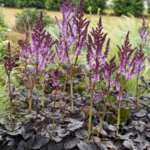

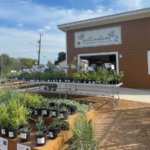



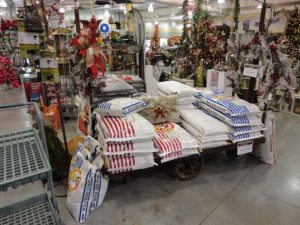



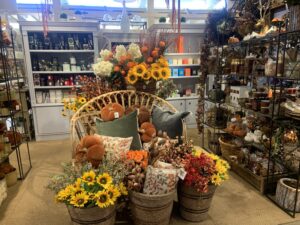

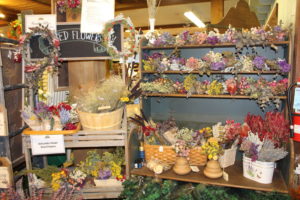
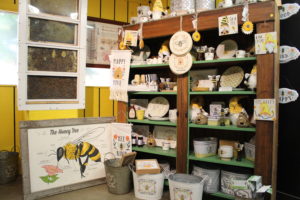

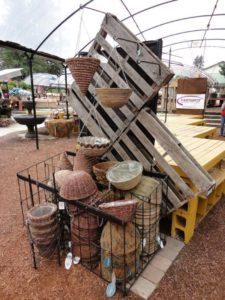
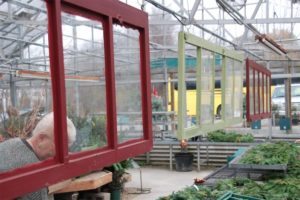
 Videos
Videos





